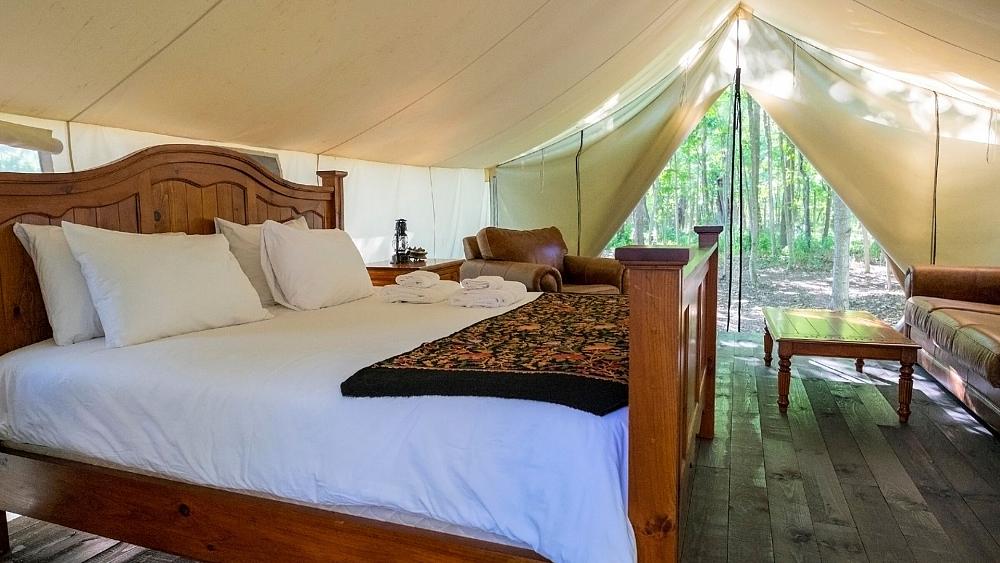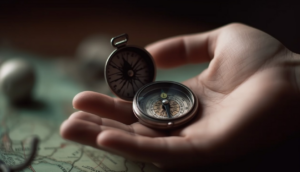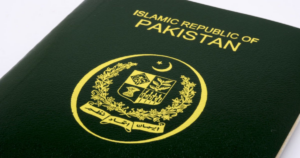
The arts, entertainment, recreation, accommodation and hospitality services have been some of the sectors worst hit by the COVID-19 pandemic, according to the latest data by McKinsey.
Since March 2020, when the virus began to increase its global transmission, we’ve seen theatres, restaurants, small independent shops, bars and clubs close their doors. Unfortunately, some of them for good.
These businesses are all intrinsically linked to the travel industry.
If explaining how the sector has been hit by the pandemic was a pyramid-shaped graph, it’s these that would form the widest-spanning bottom layer: the food, drink, arts and culture, which draw tourists to cities and towns like moths to a lamp.
Let’s term that under the umbrella ‘Entertainment and Hospitality’. The next layer up would be ‘Classic Tourist Hotspots’ as the pyramid narrows.
This includes places like museums, zoos, monuments, palaces, art galleries, theatres, heritage sites, everything that brings culture to an area. Obviously these, too, were shut down in March.
Lots of companies reacted to this new normal.
Many food services switched to take away and delivery. Deliveroo doubled its driver numbers in six months. Theatres began streaming online. Even art galleries began rolling out virtual tours. Evolution was everywhere in the struggle to survive.
Then, there’s the sectors directly connected to tourism. The businesses that could only realistically stay afloat if the travel industry was kicking. That’s airlines, cruise ships, hotel chains, travel boards, travel agents, tourism offices, companies like Airbnb and tour organisers.
Amazingly, even some of these had a plan B to hand – for example in Taiwan, StarLux developed a ‘flights to nowhere’ package which gave people their fix of air travel. But the repercussions have undoubtedly been felt; in August, airline giant Virgin Atlantic filed for bankruptcy among others.
Now mid-way through 2021, we’re hearing the message loud and clear: this year will be better.
However James Asquith, founder and CEO of Holiday Swap, believes it will be 2025 before international travel returns to the volume we’ve been used to this side of the millennium.
“The pandemic has left a lot of people worried about travel – be it from a health perspective, a financial perspective. But they still want to get out and do stuff. It’s those elements which are defining the travel trends for 2021.”
So what does the road ahead look like? We caught up with some key players in the industry to find out.
Even the biggest names in travel have felt the impact of COVID-19 this year Unsplash / Eva Darron
Curiosity culture
The stay-at-home lifestyle which has been the norm for many this year has meant most have taken to technology to virtually compensate for a lack of real-life experiences.
Topdeck Travel’s research indicates that this has resulted in a new movement, especially among younger people. They call the trend ‘rebound travel’, as in literally making a break-up-esque comeback to the travel scene.
According to their survey, 93 per cent of young adults say that the pandemic and subsequent lockdowns have increased their desire to travel.
Post-pandemic, 75 per cent of Gen Z and Millennial travellers aspire to plan longer trips – and further afield – with 81 per cent of respondents wanting to break away from standard holiday destinations.
The survey also recognised a move towards ‘bucket list’ travel options. While classics like Greece and Italy remain popular in Topdeck’s sentiment polls, bucket-list destinations such as Japan, Canada, Africa, New Zealand and the USA ranked highly.
Mini-breaks are a thing of the past
The ongoing uncertainty around travelling, plus the rigmarole of quarantines and testing, has made the idea of a mini break less appealing for the foreseeable future.
If you’re going to jump through all those hoops, it seems it’s only worthwhile for a longer trip away.
Original Travel has created a new collection of Big Slow Break itineraries, each of which are a minimum of seven days in duration and combine two or more popular weekend break destinations such as Florence and Rome, Copenhagen and Oslo or Bilbao and San Sebastian.
The cities are connected by a slow meander overland by road or rail, offering a chance to explore more of the country on a longer, more in-depth trip.
“Of all the bookings and enquiries we have had since the pandemic began, none have been for a city mini break. Plus, our own survey showed us that only 15 per cent of our clients are planning on taking city breaks, even when travel frees up. As much as this pains us – Original Travel launched with the concept of the Big Short Break, after all – we have to be realistic, so have turned our hand to Big Slow Breaks instead,” says Tom Barber, Founder of Original Travel.
Mini-breaks to cities like Berlin used to be very popular among travellers Canva
Are beach holidays heading out the door?
It might seem like sun, sea and sand holidays are moving down the post-pandemic priority list. A carpe diem attitude following months of restrictions has spurred the need to see and do more.
However, research by ClubMed indicates that all is not lost for the beach holiday ideal. The archipelagic state of the Maldives is the most searched holiday spot for 2021, with Greece hot on its heels.
“While it will take some time for the world to recover, signs do point towards travel being restored to some extent,” says Charles Knowlton, Topdeck’s Global General Manager.
“Travellers have not lost faith in exploring the world, and many cannot wait to book their next adventure.”
Getting in touch with the great outdoors
Towards the start of the pandemic, a lot of Europeans could only leave their houses once a day, either for essential shopping or exercise. It felt as though everyone was suddenly really into exercising.
However according to Alessia Fontanari, co-founder of Mapo Tapo – a rock climbing travel community – the trend for outdoor travel experiences was already seeing an upturn prior to the impact of COVID-19.
“We launched our business early 2020. Not a great time to be a travel start-up,” Fontanari explains.
So they re-focused: “Mapo Tapo started as a global initiative for extreme sports lovers. We had destinations on all continents. COVID-19 forced us to take a more local approach. We started with our destinations in Italy, targeting a European market.
“Things began to pick up over the summer, but when the second lockdown hit, we decided we weren’t giving in. We created ‘The Climbing Travel Guide’, a 200- page photo-book which shares off-the-beaten-track areas as well as raising funds for eco-tourism, education, and outdoor sports.”
Does Fontanari think lockdown has fuelled the outdoor adventure holiday industry?
“Absolutely. The trend has moved away from mass tourism and towards more authentic, natural, and sustainable travel. We saw this last summer in Italy: for the first time, mountain holidays were the favourite type of vacation for Italians.”
Mapo Tapo designs and organises group trips off-the-beaten-track for rock climbers. Their mission is to develop extreme sport tourism in remote locations as a way to bring economic growth in a responsible manner, respecting the environment and helping local communities thrive.
Holiday from home
According to research by Bloom Consulting, 35-45 per cent of the market would not travel again until the virus is under control. And even then, 15 per cent of people claimed they would not travel again for leisure purposes even if the virus is completely contained.
So what does that mean for the businesses whose livelihood depends on travel picking up again next year?
Essentially, it means it’s time to rethink the target audience. In the absence of international options, people have turned to their local areas for inspiration.
Camping, glampervans, treehouses, rural stays and the like have been high on Google’s hit list since earlier this year.
Camping, glampervans, treehouses, rural stays and the like have been high on Google’s hit list since earlier this year.
Camping and outdoor holidays have seen a significant upturn Unsplash / Dominik Jirovsky
A shift towards the eco-conscious
The appeal of off-the-beaten track holidays has escalated since the beginning of a pandemic where creating space is key. After seeing the world regenerate itself during the height of lockdown restrictions, people have become more interested in the environmental impact their holidays might have.
This is triggering a rise in alternative holidays. For example, community immersion experiences mean travellers can connect with, and contribute to, the local economy in a way that is respectful, mutually enriching and sustainable.
Similarly regenerative travel, which takes sustainable tourism one step further. While sustainable travel aims to offset the negative impacts associated with travel, regenerative tourism is about actively improving the social or environmental conditions of your host country.
That can be through carbon offsetting, contributing to a project in the area or making a donation to certain causes relevant to your host country.
The rise of the digital nomad
Remember when working from home was quite the novelty? Well, the answer to workplace COVID-control could be transitioning into a ‘work from anywhere’ mentality.
This year has already seen an increase in demand for co-working camps and other resorts designated for those who want to get away, without taking a hit to their income.
While the office lifestyle isn’t dead just yet, many economies will be managing a post-pandemic workforce simply unwilling to give up the freedom and flexibility working from home has allowed them. And that extends to the traveller who was once constrained by their city-centre 9-5 situation.
Employees have proven that the job can be done from anywhere – even the beach.








